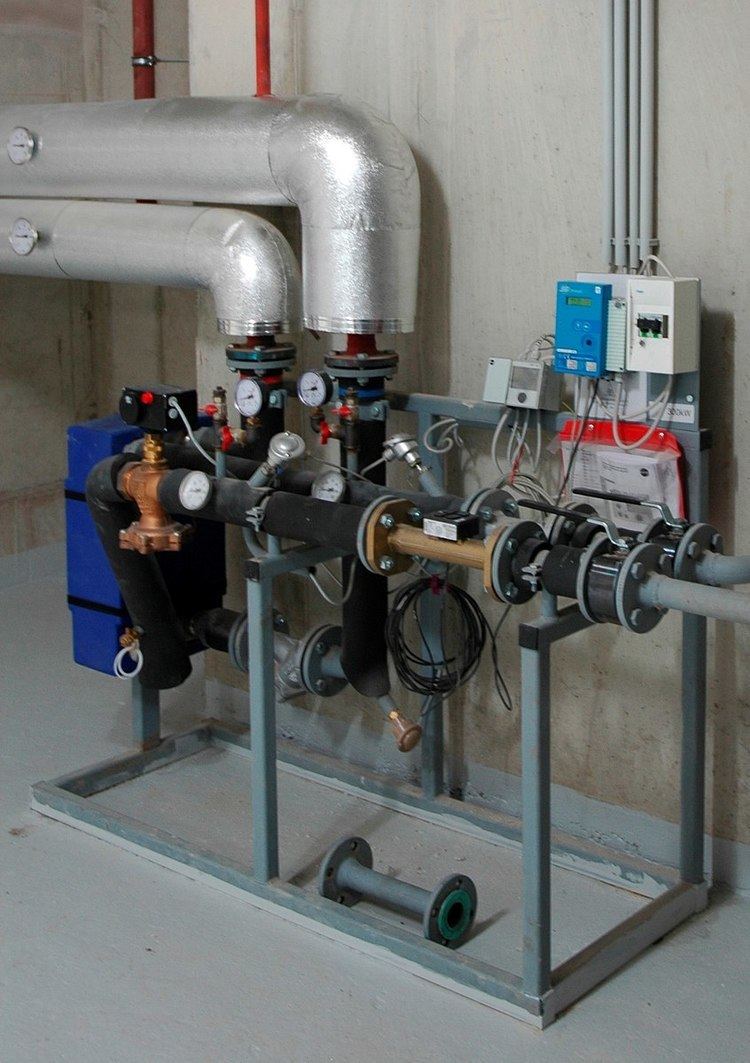A district heating substation is a component in a district heating system that connects the main network to a building's own heating system.
The station normally has one, or more of the following parts:
Heat exchanger - to split primary and secondary side of the systemControl valve - to regulate the flow through the heat exchangerDifferential pressure controller - to balance the network and improve working conditions of control valveStrainer - to remove particles that could block heat exchanger or control valveShut off valve - to stop the flow on primary side in case of service or emergencyHeat meter - to measure energy consumption and allocate costsTemperature controller - to control temperature on secondary side by regulating the flow on primary sideTemperature sensor - to sense flow and return temperatures required for temperature controlIn addition, a district heating substation may also include:
PumpSafety valveManometerNon-return valve
